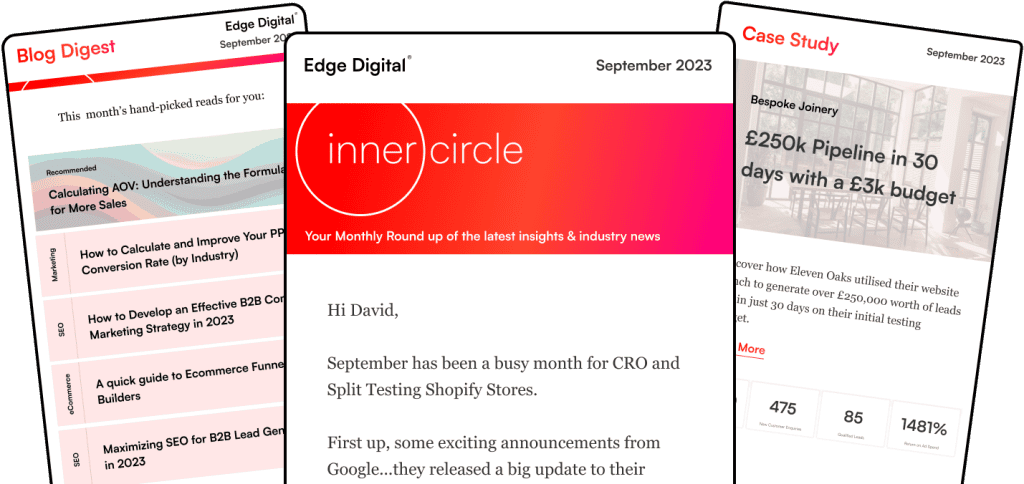Geo personalization is changing how businesses connect with users. By using location data, companies can make digital experiences feel more relevant and engaging.
They customize content, offers, and services based on where users are.
Top geolocation APIs help developers add location-based features like IP tracking, reverse geocoding, and location analytics to their apps. These tools make it easier to create targeted marketing campaigns and improve user experiences.
More businesses now see the value in mapping and location services. From e-commerce to content delivery, these APIs simplify delivering customized experiences to users everywhere.
Key Takeaways
- Modern geolocation APIs let you track IPs and deliver personalized content.
- Location-based services boost engagement through targeted and region-specific experiences.
- Strong security and privacy standards help keep location data safe and accurate.
Understanding Geo Personalization and API Fundamentals
Geolocation APIs give businesses the power to deliver content and experiences tailored to where users are. These tools process IP addresses and other coordinates, offering precise location data for custom user interactions.
Defining Geo Personalization
Geo personalization means adapting content, products, and services based on a user’s physical location. We can tweak websites, apps, and campaigns to fit local preferences and needs.
Geolocation APIs automate location data processing, enabling real-time personalization without users having to do anything.
Some big benefits include:
- Localized pricing and currency
- Regional product availability
- Language adaptation
- Cultural tweaks
- Local promotions
Role of Geolocation APIs in Personalization
Location Data APIs provide real-time geographic info by processing IPs and device data. This means you can detect where users are without needing GPS.
The APIs handle tasks like:
- IP address verification
- Mapping coordinates
- Processing location data
- Validating geographic info
They quietly power location-aware features across websites and apps.
Key Data Types: Location, City, Country, and Region
IP Geolocation services return a bunch of location data points.
Basic Location Data:
- Country code and name
- City name
- Region or state
- Postal code
- Latitude and longitude
- Time zone
Advanced Data:
- ISP info
- Connection type
- Device details
How Personalization Enhances User Experience
Location-based customization makes experiences more relevant and engaging. Users get content and features that fit their specific location.
Common features include:
- Local store locations and inventory
- Region-specific deals and pricing
- Weather-based recommendations
- Local event listings
- Delivery options by area
Overview of Top APIs for Geo Personalization
IP geolocation APIs help businesses deliver location-based experiences by turning IP addresses into detailed geographic data. These solutions provide location intelligence for everything from content personalization to fraud prevention.
Why API Selection Matters
Choosing a geolocation API can make or break your location-based services. The accuracy and reliability of location data have a direct impact on user experience.
Poor data can cause misrouted traffic, bad content targeting, or compliance issues. Factors like update frequency and coverage really matter.
Real-world uses include:
- Content localization
- Targeted advertising
- Fraud detection
- Regional access control
- Traffic analysis
Key Criteria for Comparing Geo Personalization APIs
Response time and request limits are big when you’re comparing APIs. Some other key things to check out:
Data Points Available:
- Country and city detection
- Latitude/longitude
- Time zone info
- Connection type
- ISP details
Technical Considerations:
- API reliability and uptime
- Request volume capacity
- How often the data updates
- How easy it is to integrate
- Documentation quality
Major API Providers in the Market
IP Geo Location API stands out for its broad location data and strong security features. This service gives pretty detailed geographic insights.
MaxMind’s GeoIP2 offers enterprise solutions with flexible pricing and wide coverage.
Leading providers set themselves apart by:
- Database accuracy
- Query speed
- Global coverage
- Support quality
- Pricing
Each provider has unique strengths, depending on your use case—fraud prevention, content delivery, whatever you need.
IP-Based Geolocation APIs

IP geolocation APIs let us pinpoint where users are based on their IP addresses. This enables targeted content delivery and smoother user experiences.
These tools are now a must-have for modern web apps and services.
Understanding IP Geolocation and Its Methods
IP geolocation works by matching IP addresses to physical locations in big databases. Both IPv4 and IPv6 addresses can reveal where users connect from.
IP location services give you details like:
- City and country
- Latitude and longitude
- Time zone
- Internet Service Provider (ISP)
- Autonomous System Number (ASN)
Most APIs use a mix of methods to figure out location:
- Database lookups
- Network routing data
- Correlating ISP info
- User connection patterns
Accuracy and Limitations of IP-Based Data
IP geolocation usually gives city-level accuracy, but it really depends on the region and provider. Urban areas tend to be more accurate than rural ones.
Some accuracy challenges:
- Dynamic IP assignments
- Shared IPs
- Mobile networks
- Corporate networks with centralized exits
Accuracy tends to fall within these ranges:
- Country: 95-99%
- Region: 85-95%
- City: 50-80%
Security Considerations: VPN and Proxy Detection
Modern geolocation services now include tools to spot users on VPNs or proxies. This helps keep data quality up and security tight.
Key security features:
- VPN detection
- Proxy identification
- IP blocklist lookups
- Traffic pattern analysis
These tools help stop:
- Location spoofing
- Fraud
- Content access violations
- Unauthorized API use
Top Geo Personalization APIs Compared

Modern geo personalization APIs give you precise location data from IPs, making targeted content, enhanced security, and regional customization possible. Each service offers different levels of accuracy, request limits, and data points.
ipinfo.io
IPinfo’s geolocation service delivers enterprise-grade location data with strong accuracy. The API returns city, region, country, postal code, and latitude/longitude info.
Key features:
- 50,000 free requests per month
- 99.8% accuracy for country data
- ASN and carrier detection
- GDPR-compliant data handling
Response times are usually under 100ms worldwide, thanks to their distributed network. Their abuse detection and security tools are especially helpful for fraud prevention.
ipgeolocation.io
This location data service focuses on precise geolocation, with timezone and currency info included.
Premium features:
- IP threat detection
- Bulk lookup
- Custom subdomain support
- 30,000 free monthly requests
The API also provides location context like nearby landmarks and organizations. Their documentation is solid, with code examples in several languages.
ip-api.com
IP-API keeps it simple and fast with a straightforward JSON API. The free tier gives you:
- 45 requests per minute
- IPv4 and IPv6 support
- Browser-based queries
- No API key needed
The paid version adds HTTPS and removes rate limits. You get ISP info, timezone offsets, and mobile carrier detection when available.
ipstack
IPstack offers real-time geolocation data through a RESTful API. Features include:
- 10,000 free monthly lookups
- Security assessment scoring
- Language detection
- Currency conversion
Their city-level accuracy is usually above 95%. The API supports both synchronous and asynchronous batch processing for bulk requests.
Advanced Features in Geo Personalization APIs

Modern geolocation APIs bring a lot to the table. They boost user experiences and tighten security by analyzing precise location data for personalization.
Currency, Timezone, and Language Support
IP geolocation services can spot a visitor’s local currency, exchange rates, and timezone automatically. That means websites can show real-time price conversions and schedule events with local accuracy.
Many APIs even detect preferred languages from regional data. Sites can pop up in a visitor’s native language right away—no extra clicks needed.
Key features include:
- Automatic currency conversion for e-commerce
- Local time detection for scheduling and event display
- Language preference detection for content localization
- Regional format handling for dates and numbers
ASN, ISP, and Demographic Data
Advanced geolocation tools dig into network and user details using ASN (Autonomous System Number) and ISP data. This reveals which network provider someone’s using and how data routes through the web.
Demographic data enrichment includes:
- Age group distribution
- Income level estimates
- Device usage patterns
- Connection type analysis
With this info, marketers can target campaigns and personalize experiences based on network and demographic insights.
Threat Data, Fraud Detection, and Cybersecurity
Modern security features in geolocation APIs spot suspicious IP addresses and possible threats in real-time. They watch traffic patterns and user behavior to catch fraud attempts.
Key security capabilities:
- VPN and proxy detection
- Bot traffic identification
- Risk scoring for transactions
- Digital rights management
- Geographic restriction enforcement
APIs block access from high-risk locations. They also flag weird login attempts from unexpected places.
Integration and Implementation Strategies

Getting an API up and running really comes down to good docs, efficient data handling, and choosing the right format. Most modern geolocation APIs make implementation pretty painless, offering flexible data formats for any dev stack.
Ease of Integration and API Documentation
IP geolocation APIs usually come with loads of code samples and SDKs in Python, PHP, JavaScript, and more. Setup feels quick and not too painful.
Most providers stick to RESTful endpoints using standard HTTP requests. Before you dive in, check out their authentication—lots use API keys in the headers.
The best APIs offer interactive docs with live consoles. You can test out API calls right in your browser before writing real code.
Bulk Geolocation and Performance
Real-time geolocation services let you look up batches of IPs in one go. This keeps network traffic down and speeds up your app.
Typical bulk request response times:
- Single IP lookup: 100-200ms
- 100 IPs batch: 1-2 seconds
- 1000 IPs batch: 5-10 seconds
Caching common lookups saves API calls and keeps things snappy.
Data Formats: JSON, XML, and JSONP
Modern geolocation APIs spit out data in several formats. Pick what fits your use case best.
JSON (Most common)
- Lightweight and easy to parse
- Native JavaScript support
- Perfect for web applications
XML
- Structured data format
- Great for enterprise systems
- Better validation options
JSONP
- Enables cross-domain requests
- Works around same-origin policy
- Ideal for front-end implementations
Compliance, Privacy, and Data Security
Location-based personalization APIs handle sensitive data, so privacy and security matter—a lot. Both users and businesses need strong controls.
Regulatory Compliance and Data Handling
When you collect location data, you have to follow strict laws. GDPR in Europe and CCPA in California lay out clear rules for user consent and data storage.
APIs should only collect what’s necessary. GeoPlugin and other top providers use data fuzzing—showing approximate locations to keep things private.
Key requirements:
- Explicit user consent before collecting location data
- Secure data encryption during transmission
- Clear privacy policies explaining data usage
- User rights to access and delete their data
Cross-Origin Resource Sharing (CORS) and Data Sharing
CORS policies decide which domains can reach your location data. We always recommend locking down CORS rules to keep out unwanted visitors.
Modern geolocation APIs go with token-based authentication for requests. That way, data only flows between trusted apps.
Best practices for data sharing:
- Use HTTPS for all API communications
- Implement rate limiting to prevent abuse
- Monitor API access patterns
- Regular security audits of data sharing practices
Evaluating API Pricing, Free Tiers, and Cost Control
API pricing can make or break your project’s budget and ability to scale. It’s worth taking a close look at the pricing models and free options before you commit.
Comparing Pricing Models
Pay-as-you-go pricing rules the geo API world, with costs tied to request volume. The more you use, the less you usually pay per call.
Most providers use tiered pricing. For example, the first 10,000 calls might run $0.01 each, then drop to $0.008 after that.
It’s smart to estimate your monthly usage before picking a provider. That helps avoid any nasty surprises with big server-side bills.
Free Tiers and Trials
Google Maps throws in $200 in monthly credits, which is great for small projects or just testing things out. Basic IP geolocation features often come included in free tiers.
Free tiers usually cover 50,000 to 100,000 requests per month. That’s plenty for development and early testing before you need to pay up.
Many providers offer pretty generous free IP geolocation services. For simple geo-targeting, you might not even need to spend a dime.
Use Cases and Applications of Geo Personalization APIs
Location-based APIs drive all sorts of business functions, from targeted ads to security. They help shape tailored experiences and keep digital assets safe.
Geotargeting, Geofencing, and Ad Targeting
E-commerce platforms use geo APIs to show region-specific products and local prices. This makes shopping smoother for customers.
Retailers draw virtual boundaries around stores or neighborhoods to send mobile notifications when folks enter certain areas.
Digital advertisers zero in on users by location, hoping to boost relevance and clicks. A coffee shop might pitch ads to people within five miles during the morning rush.
Content streaming services rely on location data to control viewing rights and serve up the right content for each region.
Analytics and Reporting
Businesses track where visitors come from and how they engage in different regions. This helps them optimize marketing spend.
Heat maps highlight which locations drive the most traffic or sales. Companies use this info to plan new expansions, or just figure out what’s working.
Key metrics tracked:
- Visitor demographics by region
- Peak activity times per location
- Regional conversion rates
- Mobile vs desktop usage patterns
Fraud Prevention and Digital Rights Management
Banks flag logins from odd locations that don’t match a customer’s usual patterns.
Online gaming platforms use geo-verification to enforce licensing and keep out unauthorized players.
Common security applications:
- Credit card fraud detection
- Account access monitoring
- License compliance checks
- Bot traffic filtering
IP verification blocks access from restricted regions and helps enforce copyright rules for digital content.
Future Trends and Innovations in Geo Personalization APIs
Location-based personalization is changing fast. New tech and data sources are making APIs sharper, more insightful, and just plain smarter for businesses craving targeted experiences.
Machine Learning and Predictive Personalization
AI-powered geo APIs can now predict where users might go and what they want, based on past location data. It’s a little spooky, but businesses love anticipating customer needs.
Advanced algorithms crunch tons of data points to build detailed user profiles. This makes targeting way more accurate.
We’re seeing APIs that blend real-time location with behavior patterns for hyper-personalized recommendations. They’ll suggest nearby services or products based on where you’ve been and what you like.
Expanding Data Sources and Enhanced Accuracy
Modern geo APIs pull in data from mobile devices, IoT sensors, and WiFi networks for richer location info.
Real-time geolocation data now reaches building-level accuracy in many cities. That opens up micro-targeted personalization for retail, hospitality, and more.
We’re mixing in weather, traffic, and local events with location APIs. This creates more contextual, relevant experiences for users, though honestly, it can feel a bit much sometimes.
The latest APIs come with built-in privacy features—protecting user data but still keeping accuracy high. It’s a tricky balance, but crucial for staying compliant with data regulations.
Frequently Asked Questions
IP geolocation APIs are must-haves for modern web apps that rely on accurate location data. They power everything from targeted marketing to fraud prevention.
What are the most reliable IP geolocation APIs available?
Top providers like GeoPlugin deliver consistent accuracy through intuitive APIs. Their infrastructure and frequent database updates keep data quality strong.
Honestly, it’s best to try out a few providers during their trial periods. Test them in your specific use case to see which one fits best.
How do IP geolocation APIs enhance user experience through personalization?
APIs let you personalize content by geographic location. You can show local news, prices in the right currency, or even region-specific deals.
These tools figure out where users are and adapt automatically. No one has to type in their location, which just makes everything smoother.
Which geolocation API offers the best accuracy for real-time user tracking?
Most IP geolocation services get about 55-80% accuracy for regions and 50-70% for city-level. Honestly, accuracy depends a lot on the user’s device and where they are.
If you want better real-time tracking, it’s smart to combine more than just IP data. It’s rarely perfect, but that’s the nature of the beast.
Can you list geolocation APIs that offer comprehensive free tiers?
Some providers have free tiers with basic location data and daily request limits. It’s worth trying a few to see which fits your needs.
Just remember, paid versions usually offer better accuracy and more requests. Free is great for testing, but you might outgrow it.
What are the key factors to consider when choosing an API for geolocation services?
Put data accuracy and update frequency at the top of your checklist. Pricing, request limits, and support matter too.
Don’t forget to look for things like fraud prevention and network optimization features. These extras can really make a difference.
Are there any geolocation APIs that integrate well with Python for application development?
Plenty of geolocation APIs offer Python SDKs or simple REST endpoints. You can usually connect with them using popular Python requests libraries.
Most have pretty clear docs and code samples, so getting started doesn’t feel like a headache for Python folks.



